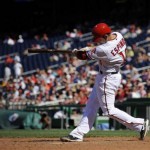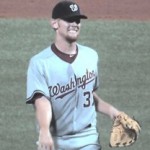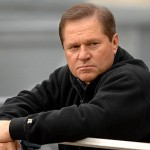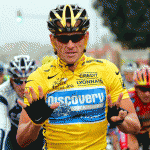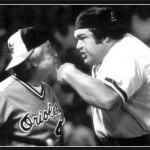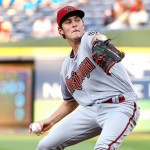
Pitching phenom Trevor Bauer demonstrates his pitching grips. Photo Kevin C. Cox/Getty Images via bleacherreport.com
Fascinating stuff here (link on youtube but referenced via the HardBallTalk blog).
I know I criticized Trevor Bauer in the wake of Arizona trading him away for what seemed to be personality issues. But in hindsight, with the knowledge now that the team also traded Chris Young and now Justin Upton for apparently all the same reasons (manager Kirk Gibson didn’t like them, or didn’t like the way they played), at some point you have to start looking at the manager who can’t get along with star players versus the reverse.
But stuff like this video really makes me like the kid. He posted this video showing how he grips and throws all his pitches in response to questions he got from regular fans. He also freely gives out his facebook and twitter contact information and promises to try to get back to fans who ask questions. I love social media sometimes.
Bauer’s pitch grips and thoughts:
- Four Seam Fastball: conventional grip, nothing special. He doesn’t mention throwing a 2-seam fastball other than mentioning the pitch in passing later on, but with his velocity and his throwing motion (straight over the top) you’d have to think a 2-seamer would be effective.
- Regular Changeup: not a palm-ball, but a de-acceleration technique by throwing the ball off his middle fingers.
- “Cut” Changeup; moves his index finger up and provides a bit of pressure; this apparently causes the ball to “cut” 2-3 inches.
- Cutter; he calls it his “regular slider,” but its an odd grip for a slider; it looks more like a 2-seam fastball grip. He admits it moves more like a cutter, so that’s what I’ve called it. He seems to fix his wrist slightly askew, then go through a fastball motion and the ball cuts.
- Slider: This is a much more conventional slider grip and throwing motion. He calls it a “dot” slider (likely because the seams form a dot on the spinning baseball) and says that its rather “slurvy,” probably because (unlike his curve) it moves across his body.
- Reverse Slider: He uses the same cutter grip but fixes his wrist in and then comes through the ball with a screw-ball motion. He says he gets 4-6 inches of reverse movement. Man that’s a lot of movement if its true. Mariano Rivera only gets about 7-8″ of movement on what is generally the best cutter in the game.
- Curve: he throws 2 variations depending on whether he’s looking to control it for strikes or to really break it off as an out pitch. He varies the pressure of his middle finger; less on the tip for lesser movement/more control and then more on the tip for more movement/sharper break. He doesn’t seem to snap his wrist in the same way that a 3/4 pitcher would (basically where the wrist snaps towards the opposite side of the body); he snaps his wrist straight down towards the ground. This should result in close to a 12-to-6 curve that is relatively rare in the majors. I would have thought this meant less spin, but I’d also guess that with enough wrist strength and repeitition, you’d get the spin you need.
- Split Fingered fastball: he definitely throws this like Roger Clemens or Mike Scott, where the ball isn’t jammed back into the hand like a forkball, but instead is more like a fastball brip with spread fingers. He doesn’t throw this much, but it makes sense for an over-the-top guy to throw this. (I often said that Brad Peacock needed to learn this same pitch).
He also talks a lot about the way he fixes his wrist on pitches (changeups and sliders) and brings his arm through. I wonder; is that conventional? I’ve never given thought to the position of my own wrist when I have pitched in the past.
So, that’s 8 specific pitches, perhaps 9 if you count a 2 seam fastball in there. And there’s no circle change or knuckle curve. How do you call a game with this guy?
His pitch f/x data is limited from 2012; they only have 169 pitches classified. They have him throwing 4 differerent pitches (FB, CU, CH, SL) at speeds that generally are lower than his scouting reports have him throwing (FB average velocity 92.2 with a 95.1 max). I’m hoping he gets a shot in 2013 to really show his repetoire. I’d like to see what he can do in the majors.

